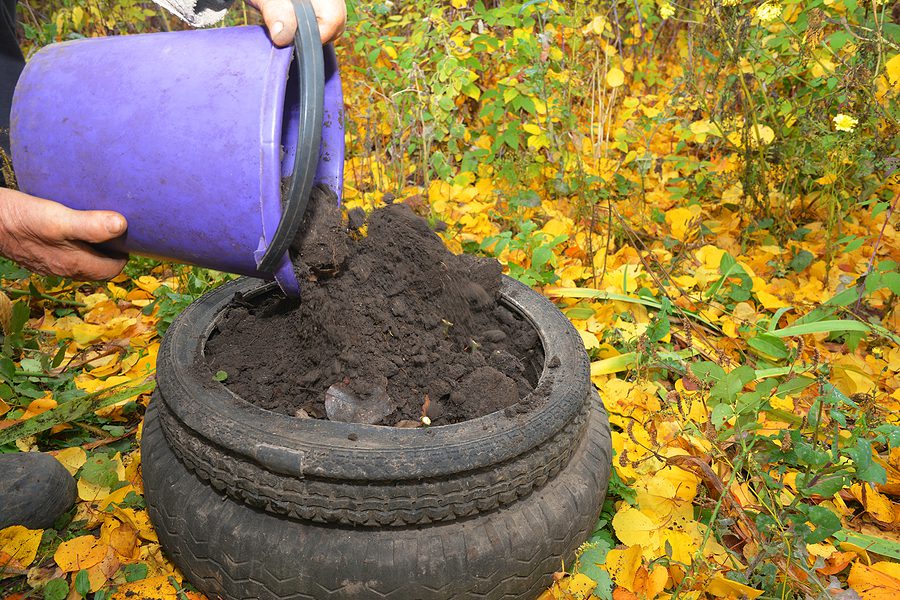Winterizing Your Albuquerque Garden – Here’s How

You know what they say: a gardener’s work is never done, and that includes Albuquerque gardensAnd so, during fall it’s time to get your growing space ready for winter by doing some TLC.
A few simple tasks mean you will be able to reap the benefits and rewards come springtime. Are they necessary? Absolutely! You’ve spent a great deal of money, time, and energy on your garden, so for the sake of a few maintenance tweaks that can be performed with a couple of tools and a couple of hours, it will be well worth it.
Step One: Get Rid of The Weeds
It’s not a fun job, but it must be done. Along with dead leaves and plant parts of any kind (even invasive ones), you should get them out now, especially if your garden isn’t looking too good—or even worse yet: bugs!
If there are strange colors on anything, an infestation of creepy crawlies, or plants that didn’t grow well, then it’s time for these plants to disappear.
Some gardeners will also take the opportunity to completely clear their veggie gardens and cut back perennials. This step is really a matter of preference, but many people like to leave them there for added winter interest! Coneflowers and ornamental grasses look beautiful covered in snow — plus they have extra food for birds too – making this an excellent way to feed wildlife while enjoying your own private sanctuary.
Step Two: Protect Your New Garden Beds
Did you add a new flower garden this season? When it’s time to establish plants, the first year is often when they need that little extra coverage. As your perennials get going and start reproducing in earnest – don’t be shy about giving them some love!
Covering their roots over winter can help ensure healthy growth come springtime (and keep those slugs at bay). You may want something like a garden cloche which will cover an entire bed or just part of one. And remember while these might seem nuisance chores, you’ll reap the rewards in the not-too-distant future.
You might be thinking that this is something you’ll mostly do for new perennial beds, not veggie gardens or already established flower beds. But the reality of it is if you’re looking to continue growing vegetables like lettuce and radishes in winter you should consider installing a cold frame.
Step Three: Plant Your Bulbs
While this doesn’t fall into the “clean-up” category, but it’s still an important list item to get done before winter, and there are some good reasons for that.
Some gardeners have trouble planting bulbs because their ground is too hard or they live on clay soils, which makes getting a hole deep enough impossible (you need at least 4 inches). If you’re one of those people and your spring season has come early thanks to all our beautiful snow flurries – then this task will be easy as pie.
Step Four: “One Last Drink”, Then Turn Off the Water
Giving your garden a drink before you turn off the water for winter is important when it comes to new plants. You don’t have to worry about keeping it up through frost time, but just give them an extra boost by giving that final watering about two weeks before the ground freezes. It’s also a good idea at this time to make sure you empty and store your hoses, rain barrels and other equipment to prevent them being damaged by the cold.
Step Five: Rug Up Your Rosebushes, Shrubs and Trees
When gardeners are trying to get their plant established, there’s often a need for protection from harsh winter winds. One way that this can be done is by providing them with fleece jackets or cones made specifically for rosebushes which help keep the roots warm and secure while still allowing some room, so plants don’t suffocate themselves.
Fleece jacquard fabric has become increasingly popular over recent years due its versatility—it looks great both indoors as well outside on patios! You could also use garbage bags filled with soil inside these types of covers instead if you’re planting small seedlings.
You’ll also want to protect the tree bark from rodents, who will eat a ring of bark around a young tree. Especially in northern gardens, protecting your trees with plastic collars is a necessity.
Step Six: Special Treatment for Your Tender Plants
Dig up those Cannas, Daffodils and other bulbs before winter comes! You’ll want to place them in a dark location like your basement—but research the best storage recommendation based on the plant. Then in spring, you can replant these for another season.
In addition, many gardeners will also move their favorite annuals such as Begonias or Geranium indoors over fall/winter too so that’s another point worth considering if possible. It may be a bit of a gamble whether they make it through until spring, but if you have the space, it’s worth a try. Yes, you expect to buy annuals new ach year, but it’s a bonus if you can keep them going through winter.
Step Seven: Extra Mulch Won’t Go Amiss
Fall is the time to put on fresh mulch. This will give your plants all they need, and more. Contrary to what you may have been told, mulch is not for keeping plants warm, in fact the purpose is exactly the opposite. The mixture of snow and mulch helps to keep the ground frozen until spring, which is your goal, because you don’t want your plants to attempt to thaw out and grow prematurely.
If you have areas of your garden that are looking a bit bare, add mulch before the colder temperatures arrive. Even if you don’t cloche or jacket your plants, the mulch will help to protect the roots. If you’re on a budget, you can use leaves as mulch instead of wood chips.
